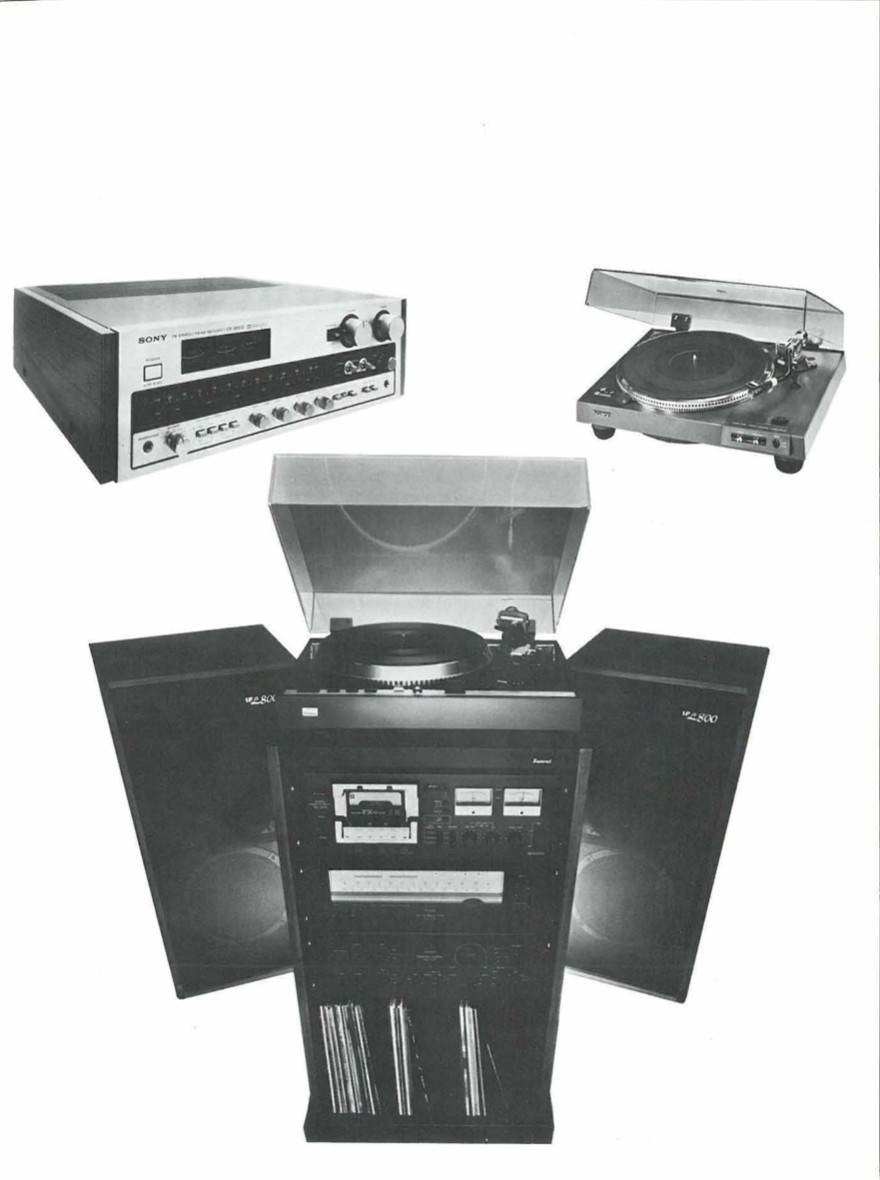
There’s virtually no limit to the amount of enjoyment that one can experience from recorded music. The one thing that can limit that enjoyment is the equipment that it’s played on. So whether your musical preference is ground-pounding Reggae, ear-soothing Jazz, or highflying Disco, it all means nothing until it’s played back on a good hi-fi system.
A good hi-fi system need not entail a huge expense, though there is a correlation between price and performance. It’s not uncommon to find two different systems priced within a few dollars of each other, but with performance specifications and features that vary considerably. On the other hand, if you choose a system solely on sound and appearance, you could end up spending as much as $2,100 for a pair of speakers and $3,300 for an amplifier. The real question that one should consider is how much you are prepared to pay for quality. One should approach buying a hi-fi system with the same care and consideration that goes into purchasing a car or home. All it takes is just a little research and planning to select the system that fits your needs. There’s absolutely no reason why our first system shouldn’t be your final system. It just doesn’t make much sense to buy a mediocre system when for just a few dollars more you can get a system that will do the job. A basic sound system will usually consist of an amplifier, a pair of speakers, a tuner and turntable.
These components are generally packaged in one of the following forms: in a console, as a compact or separate. People who are generally more concerned with getting a system to match their living room decor are apt to buy a console. Most consoles feature expensive, handcrafted wood cabinets and inexpensive inferior components. So if you want good sound and fine furniture, I suggest you buy the components separate and have a carpenter build the cabinet.
People with limited space and tight budgets who want reasonably good sound will buy a compact system. Most compacts are designed with the tuner, turntable and amplifier all in a single unit, only the speakers are separate. If you buy a compact system, go with one that’s made by a manufacturer who also has a reputation for good hi-fi components such as Fisher, Magnavox, Pioneer or Sony. The reasoning is, if they can’t make good components, there’s little reason to believe that they’ll do any better with compacts.
Individual components offer more flexibility, features and better overall performance than consoles or compacts. But with so many models and features to choose from, selection becomes quite a problem. You can simplify matters by first selecting the format you want to go with. By format I simply mean the actual components that go into the system turntable, tuner, etc. Since you’re the one who’s picking out each component, you determine what will or will not go into the system, not the manufacturer. In short, you are in charge of quality control.
The world’s biggest numbers game is played by audio manufacturers and rarely does an inexperienced consumer win. The highly competitive nature of the industry leaves little room for the soft sell approach. Today, if a hi-fi component is to get out of the store it has to have better specs, eye-dazzling cosmetics and loads of features. This helps to explain why some components are designed with the emphasis on appeal and not performance.
Before you can decide what system to buy, you must first determine how much you’re going to spend. If you want to get some idea what your money can buy, walk into a few stores and ask the salesperson to show you a few systems priced within your pocket range. Do this a few times so that you have a good idea what the end product will sound like. Once you’ve settled on the sound, you can now turn your attention to price and performance considerations. Bargain hunting for a hi-fi system is not too difficult if you know a bargain when you see one. This requires comparative shopping and some knowledge of performance ratings or specifications. Unfortunately this is not a subject that can be discussed realistically in one article.
As a closing word, the key ingredient in buying any hi-fi system is patience. What might seem like a great bargain one day can turn out to be a big joke the next. So if you want to get the most out of those one-on-one evenings, start with a good wine, a good hi-fi system and keep reading ROUTES for more information on audio.
Keep reading this issue – next article
See a list of all archived ROUTES editions
